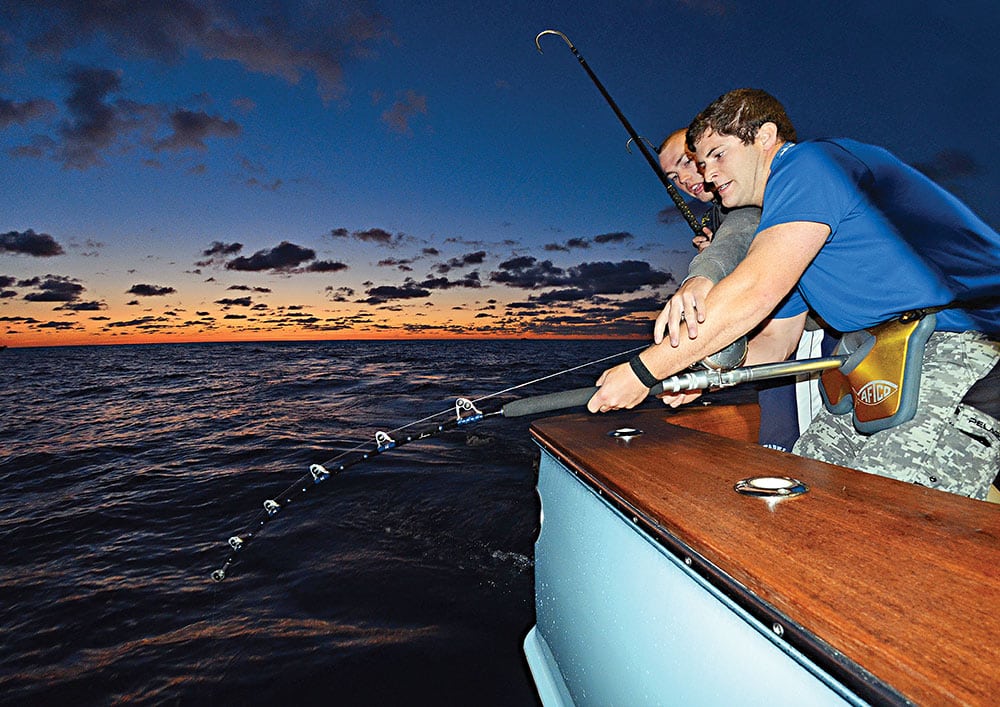
9:30 p.m., late August: Atlantis Canyon, 100 miles south of New England. The night was pitch-black as I motored my Northern Bay 36 among a dozen other boats trolling the darkness. We’d seen a nice tuna bite at dusk, but we had missed our one opportunity. I was pushing my comfort level, trolling in close quarters using radar and a deck watch, hoping for another knockdown.
Bam! Long rigger down hard.
An hour later, with much sweat and effort, we boated a nice 160-pound bigeye tuna. After we cleaned and iced our fish, we set up for our normal nighttime swordfish drift.
Nighttime Tuna Bite
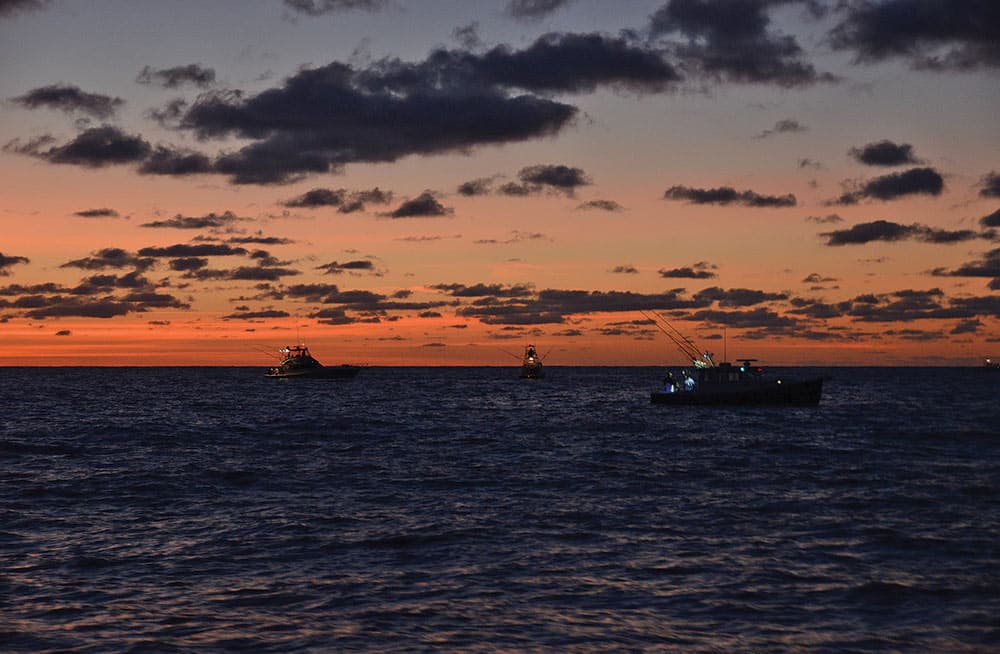
At 2 a.m., I awoke from my midnight nap to take the helm in deteriorating conditions. Three more hours until dawn, and the building 15-knot wind was already kicking up whitecaps. We had drifted out of the swordfish zone, and I needed to move the boat. Four or five boats still fished the canyon depths; the remaining half dozen boats scattered with the wind. Effectively drifting for swordfish in these conditions might be tough, I thought. Why not troll, and see if we can find more tuna?
Our crew quickly set up a four-rod spread, and I rolled into the wagon train in the center of the canyon. I quickly realized this was a safety-first game, and avoiding collisions with boats and lobster traps was paramount.
I picked my own 1-mile course and started circling, my entire crew dozing or fully asleep.
Bigeye on Deck
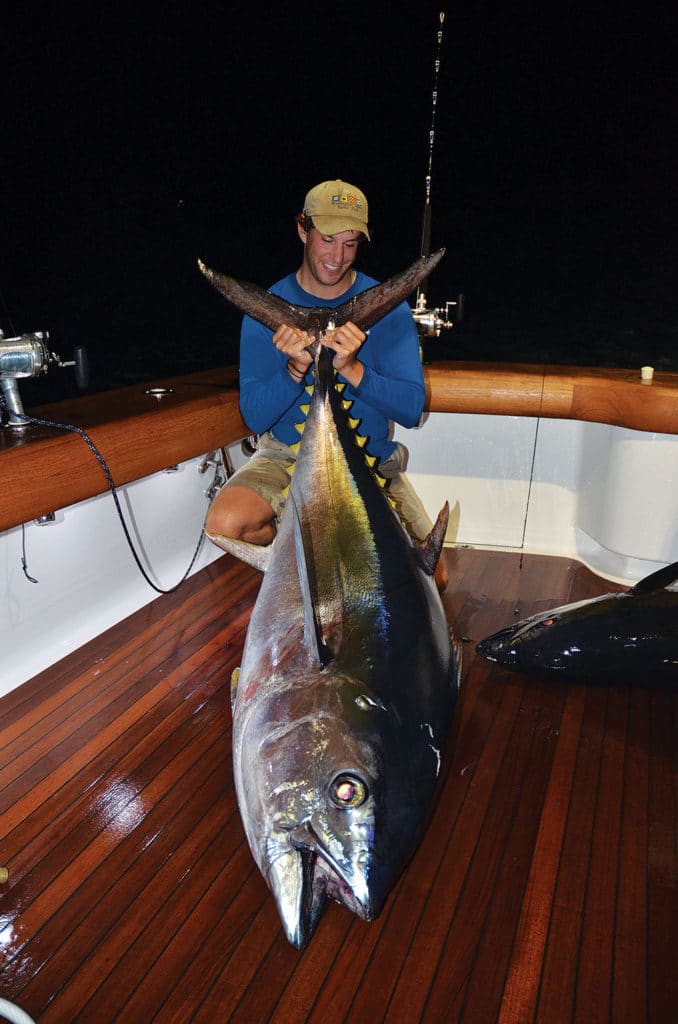
3:30 a.m.: The deck erupted — a double knockdown and one still on!
The full crew bounded to their feet within 30 seconds. We fought that fish in tough conditions, seas breaking 3- to 5-footers. Eventually we spotted the tuna — another 160-pound, very stubborn bigeye.
As with most bigeyes, the end game proved brutal, and light was showing in the east when we finally got a dart and gaff in the fish. Conditions worsened at dawn.
We finally headed home about 7 a.m., a good bit wiser to this new nighttime bigeye opportunity and ecstatic to have two big tuna on board with us.
Canyon Bigeye Strategies
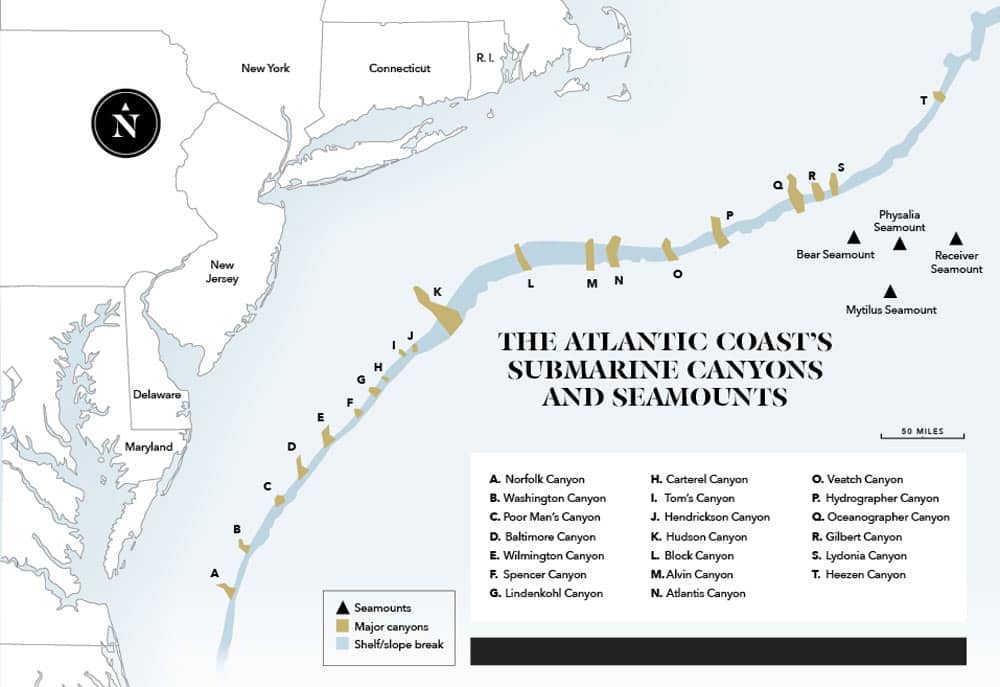
Bigeye tuna have always been the prize of the Northeast canyons. They swim deep in the water column in cooler zones during the day and only periodically come up to the surface to feed at dusk or during the night. In the summer, they range from Maryland to Canada, moving up the coast from the Carolinas in late June, when the water warms to 70 degrees.
The fish take up residence from the Hudson Canyon, off New York and New Jersey, to the Hague Line, at the United States-Canada border, by late July. They stay until the water cools below 65 degrees in late fall.
Plentiful in the 1990s, canyon bigeye numbers declined for a decade, through the early 2000s. An extremely lucky few recreational boats would get a bigeye bite every other trip. Wolf packs were almost nonexistent.
In 2012, the tuna suddenly returned to the Northeast with a vengeance; they were everywhere. Boats that seriously and aggressively targeted bigeyes reported multiple bites per trip. By 2014, lucky captains who pinpointed them would return home with one or more bigeyes per trip. Over the past three years, a few captains have even filled the boat and left them biting.
Pre-Fishing-Trip Planning
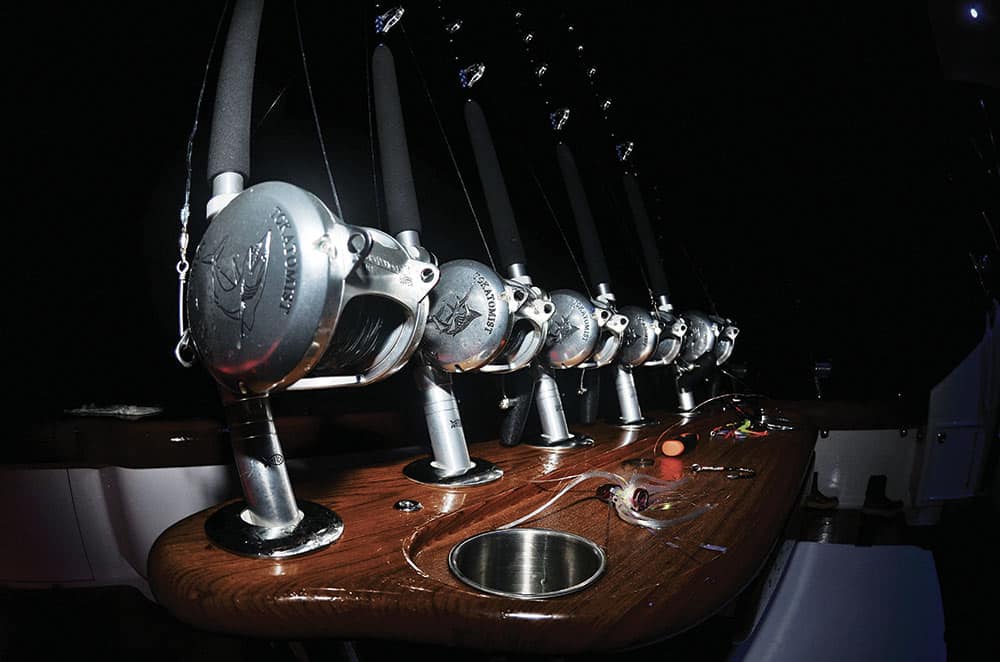
A night troll is typically planned days ahead of a trip. An experienced crew creates time segments focusing on evening, night and dawn. Our team trolls for bigeyes several hours after dark, and then makes at least two swordfish drifts before trolling another hour for bigeyes before dawn.
I usually have three or four areas circled on the chart before we leave the dock. I start by heading for a canyon corner, where I see a notch or a turn in the wall. We look for bait and structure in 800- to 1,500-foot depths, using our charts and the fish finder. If we troll over a sharp edge or a plateau in the deep, we mark it on the plotter to explore further. Once you start looking, you’ll see a lot of deep structure just off the edge.
Structure holds bait and affects currents, forcing deeper water to the surface. Bigeye tuna prowl these edges and notches 400 to 800 feet down, coming up high periodically.
If you mark a cloud of deep bait or see a baitball high in the water column, look carefully for red fish marks below the bait. I can’t think of anything more exciting while trolling than to mark them down in the deep, see the streaks on the fish finder as they come up and then turn back in time to see eruptions of white water in the spread.
If a crowd develops at dusk near a canyon tip, I’ll slide off a mile or so and find my own fish. If the fleet is on the west side of the tip in 1,000 feet, we’ll explore the same contour a mile down the wall or check out the east side of the tip. We’re also never shy about moving out of a known canyon and hammering unnamed notches a few miles away all by ourselves.
Simple Techniques Score Tuna
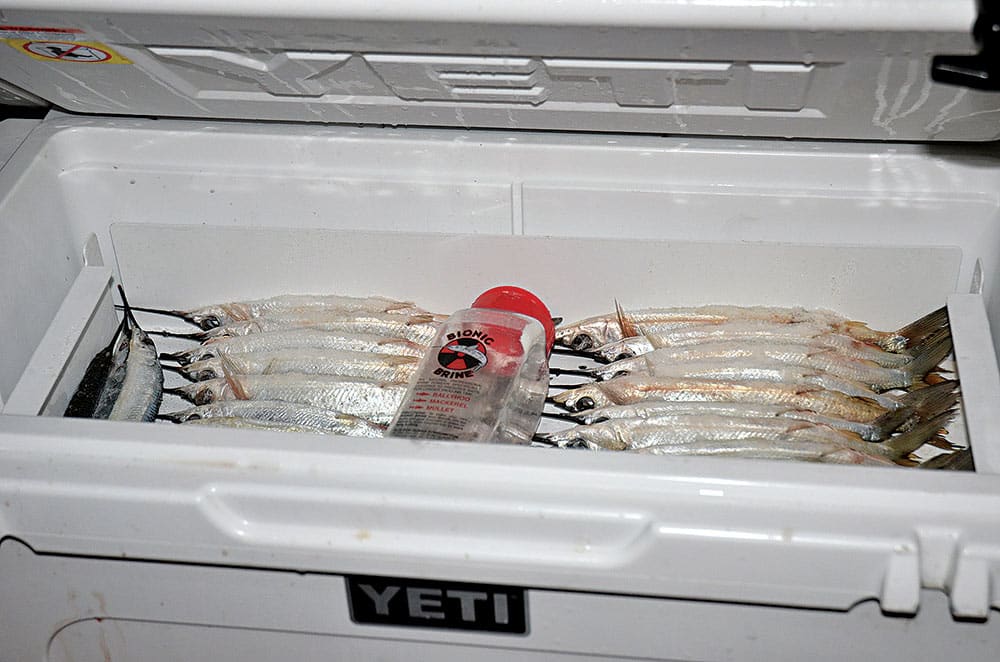
I can’t offer any magic techniques for trolling at night or any surefire secrets. But as with any fishing endeavor, the more thought and attention to detail you put into it, the better your results.
I troll a simple ballyhoo spread. At night, you can’t see your baits, and when you get bit, you don’t want a maze of lines to unweave. We use four rods, typically Penn International 50VSW or Shimano TLD 50 LRS reels and 50- to 100-pound-class Star trolling rods.
I overline my rods with 600 yards of Jerry Brown 130-pound-class braid backing and 150 yards of 100-pound Momoi Diamond mono top shot. All leaders on our gear are 200-pound Momoi leader material, terminated with an 8/0 hook. I run two traditionally rigged (under the gill plate and out the belly) ballyhoo behind 9-ounce Joe Shute heads on the long riggers. I put them back out of sight — two lonely soldiers swimming alone in a dark sea. I flat-line one ballyhoo behind a 3- to 5-ounce head off the transom.
I also run a luminescent, straight-running lure off the transom corner. (I like an old lumo Mold Craft Wide Range, but we have also caught fish on heavy Green Machines and Braid Bigeye Rockets.)
Safety Rules at Night
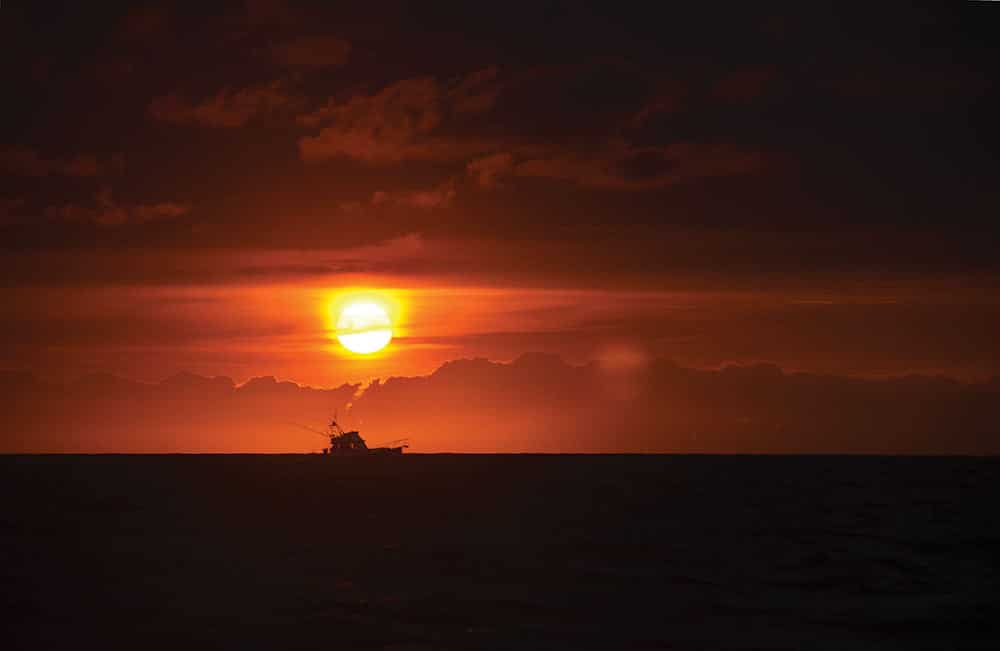
Trolling in close quarters at night wracks the nerves. I do my best to stay at least a half mile away from other boats at all times, and I post a crew member on deck to make sure I’m working the same direction as other moving boats. We troll lights-out: no deck or underwater lights. Everyone trolls circles or figure eights, trying to pound a specific area. I find it far better to match those circles in the same direction than cross over and over. I concentrate on hitting the same three to four spots in a 1-square-mile area, making a classic Etch A Sketch design on my chart, using simple slow turns planned well ahead.
At the same time, I stay aware of my surroundings, looking for lobster gear in 500 to 800 feet, right on the edge. I stay deeper to avoid potential trouble.
Radar also plays a key role. If you’re not completely comfortable with operating and interpreting your display, you probably shouldn’t try this nighttime trolling.
I open radar on both of my Furuno NavNet 3D multifunction displays — one shows radar only; the other overlays radar onto a chart. I mark a couple of flyers (buoys) on the chart to help me visualize the lobster-trap line so I can keep well away.
I flip on and off the radar trails so I can visualize the direction and pattern of other boats. That helps me reconfirm the deck watch.
Tuna Payoff
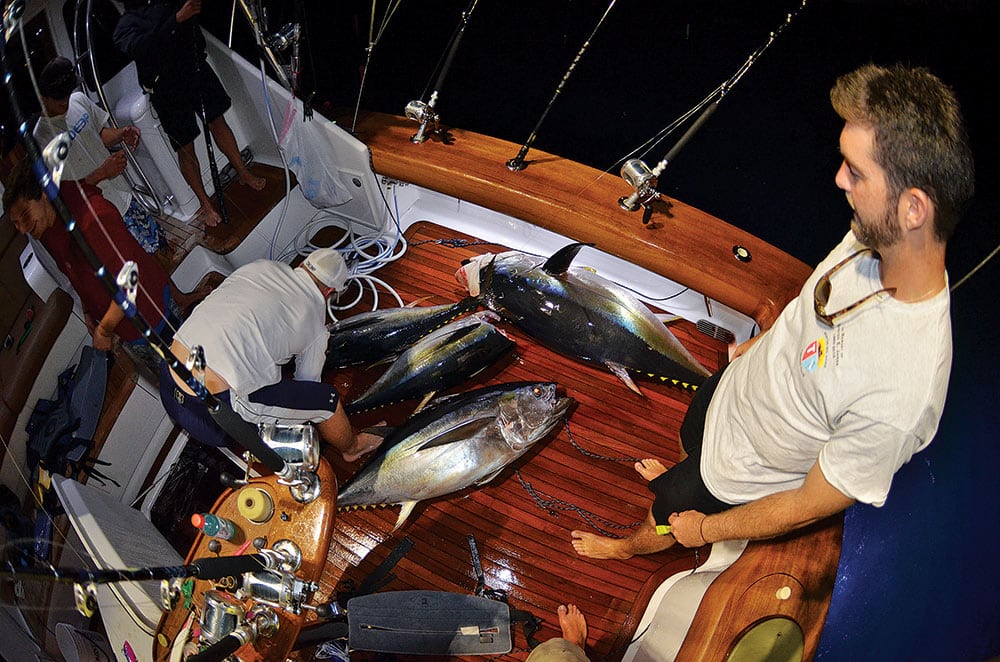
We plan for one bite; we’re not interested in all rods going down in the dark. We’ve had three bigeyes on at night, and it’s a mess.
Once we’re tight, everything comes in quickly. That gives me free rein to maneuver the boat to best help the angler. I immediately pick up the radio mic and tell anyone around us that we have a fish on and need space. The second we hook up, I turn on every light I have on the boat — deck lights, spreaders, underwater and even my searchlight. I want to be seen by anyone else near me.
Bigeyes take multiple long runs and deep dives followed by a brutal tuna circle the last 100 feet, putting wear on any angler. On my boat, everyone knows his job: angler, harpooner, leader man, gaff man. We work as a team, and we communicate.
I keep it simple and safe, gently moving the boat to help the angler. I don’t charge all over the ocean or back down hard at night.
I also try to convince my crew “no wraps at leader.” As captain, I’m terrified of a person slipping overboard, especially at night. Safety gear — a life jacket with a strobe or light stick — on the leader man is a good idea.
Perfect Night Bite
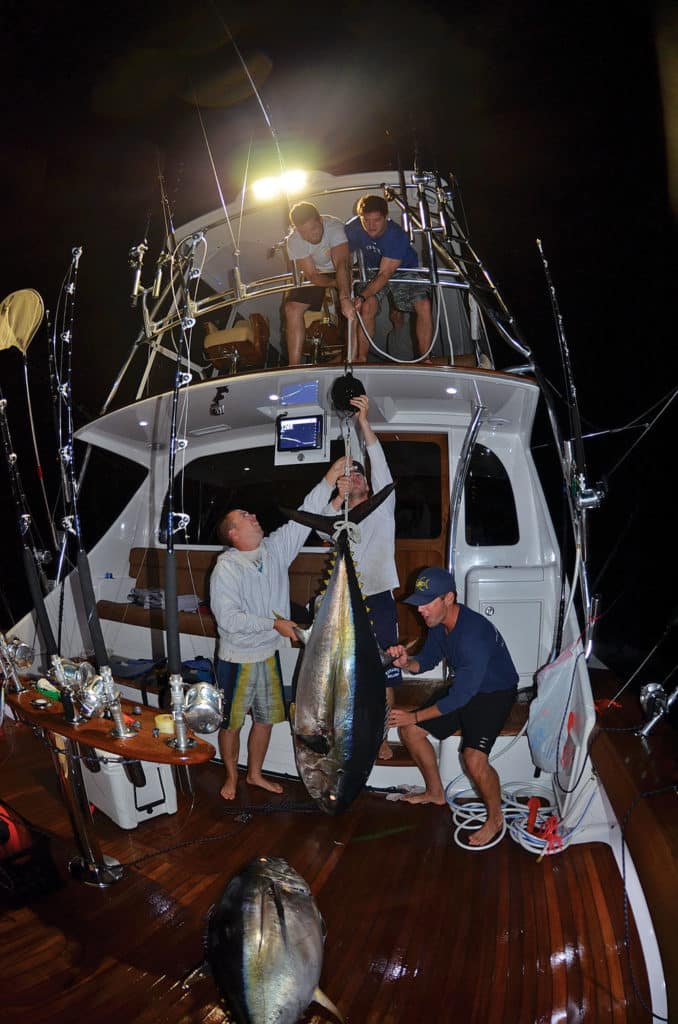
A Northeast canyon trip means a major excursion in time and distance — 100 miles out for 24 to 48 hours. Make the most of your hours of darkness, and don’t waste that valuable fishing time idly drifting and sleeping.
Put a plan together to troll a few hours into the dark before setting up to drift, and get some crew rest. But don’t rest too much; get back on the troll before dawn, exploring bait and deep structure to target bigeye tuna.
Finally, expect the unexpected. Just as the boat has droned to sleep everyone but the captain and he is pulling his hair out with boredom and frustration — bang! — bigeye on!
About the Author:
Capt. Larry Backman is a passionate Northeast offshore fisherman who has logged more than 125 canyon trips over the past 20 years. While he fishes recreationally, he also holds a U.S. Coast Guard 50 Ton Masters license. When not fishing, Larry is an executive in the computer-software industry.
Surprise Bite
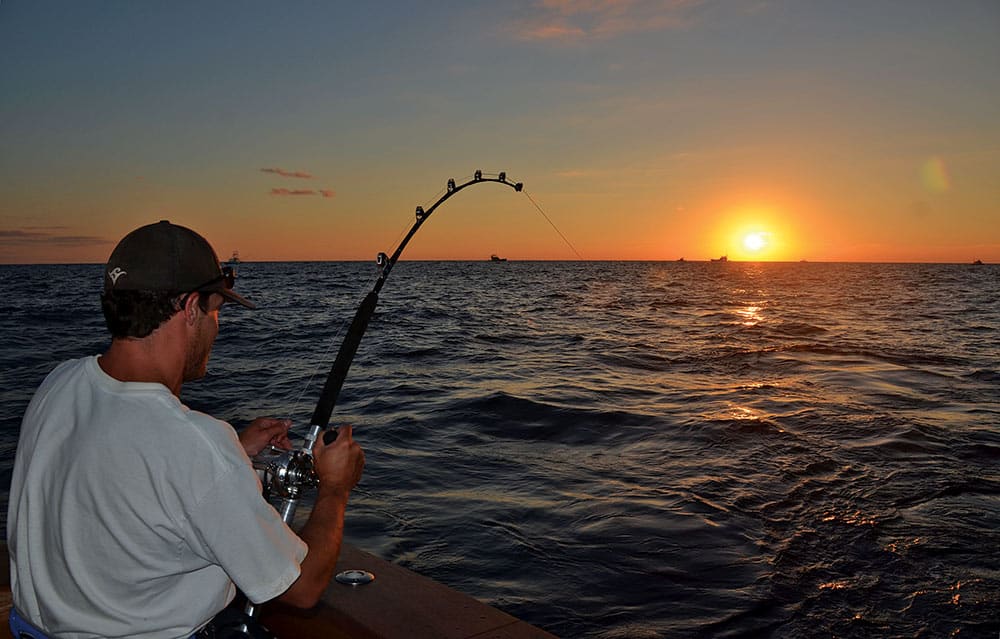
A simple trolled ballyhoo spreadattracts plenty of other species besides bigeye tuna. My good friend Capt. Damon Sacco, who runs his Castafari Sportfishing charters out of Nantucket, trolled up a 400-pound swordfish dead center in Welker Canyon last summer at 11:30 p.m. — on ballyhoo. Another well-known Nantucket captain won the tri-state tournament about five years ago with a 275-pound swordfish he trolled up in the dark, again while using ballyhoo.
Last summer my crew and I rolled into West Atlantis at 2:30 a.m., marked some bait and put out our four-rod spread. Ten minutes later, we boated a 50-pound yellowfin. We circled back and hooked another 50-pounder. A second return yielded nothing, but after we extended the circle another half mile, at 4:30 a.m., three rods arced over hard and we tripled up on bigeyes — all on ballyhoo.
Bigeye Tuna: Thunnus Obesus
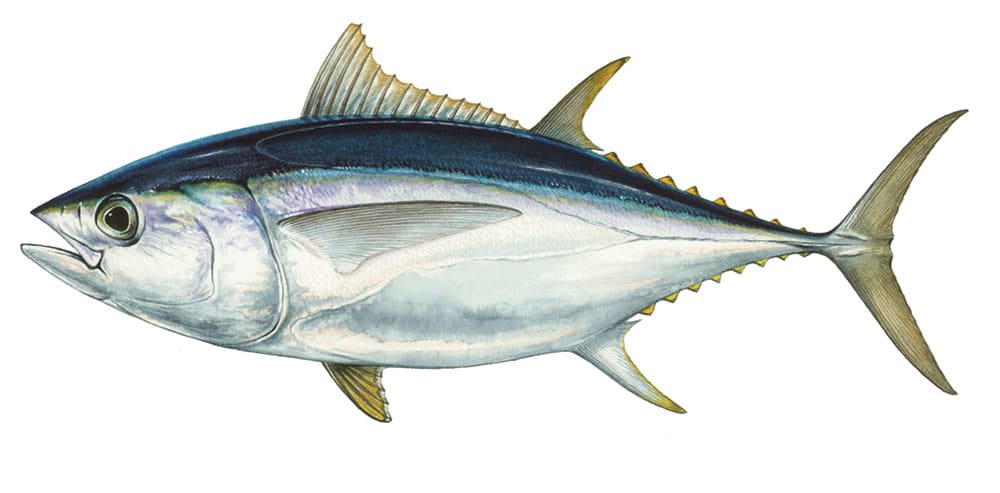
One of the prize catches of the Northeast canyons, bigeye tuna range from tropical seas to as far north as the Grand Banks of Canada in the Atlantic; they’re targeted in the deep waters off the continental shelf. Adults grow to more than 300 pounds, and with their stocky, rotund shape, they’re respected by fishermen as the toughest of the tunas to land.
A typical bigeye stomach reveals many dozens of large illex squid, indicative of deep-feeding behavior. While bigeyes are typically caught surface trolling, they’ve also been caught deep-dropping baits to 1,500 feet.
Federal regulations require a 27-inch-curved-fork-length minimum size for bigeyes; there is no bag limit. A highly migratory species permit is required for vessels fishing bigeye tuna recreationally.








